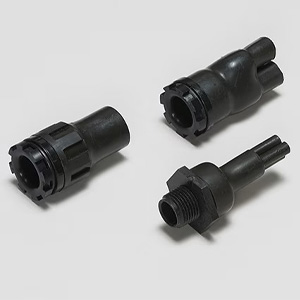 Cable entry seals, also known as cable entry systems or cable glands, are designed to protect and secure cables as they pass through walls, panels, or enclosures. They provide several functions, including sealing, strain relief, and environmental protection. Here’s a detailed look at how they work:
Cable entry seals, also known as cable entry systems or cable glands, are designed to protect and secure cables as they pass through walls, panels, or enclosures. They provide several functions, including sealing, strain relief, and environmental protection. Here’s a detailed look at how they work:
1. Sealing
Cable entry seals create a barrier around the cable to prevent the ingress of dust, water, and other environmental contaminants. This is achieved through various design features:
- Gaskets and O-rings: These components are made of materials like rubber or silicone and compress around the cable, forming a tight seal.
- Sealing Compounds: Some systems use putty-like compounds that mold around the cables, filling any gaps.
- Compression Seals: When the gland is tightened, an internal sealing element compresses around the cable, creating a watertight seal.
2. Strain Relief
Cable entry seals provide mechanical support to the cable, preventing stress and damage where the cable enters the enclosure. This is particularly important in dynamic or high-vibration environments. Methods to achieve strain relief include:
- Clamping Mechanisms: Clamps inside the gland grip the cable securely, preventing movement.
- Cable Grips: Some seals use flexible grips or jaws that tighten around the cable when the gland is installed.
3. Environmental Protection
Cable entry seals protect against various environmental factors, ensuring the integrity and longevity of the cable and the connected equipment:
- Ingress Protection (IP) Ratings: Many cable entry seals are rated according to international standards (like IP67 or IP68), indicating their resistance to dust and water ingress.
- Chemical Resistance: Seals are often made from materials resistant to chemicals, oils, and other corrosive substances.
4. Thermal and Electrical Isolation
In some applications, cable entry seals provide thermal and electrical insulation, protecting cables from extreme temperatures and preventing electrical interference:
- Thermal Insulation: Materials like thermoplastics or rubber can insulate against high or low temperatures.
- Electrical Insulation: Non-conductive materials prevent electrical faults and ensure safe passage of cables.
5. Types of Cable Entry Seals
There are various types of cable entry seals designed for different applications and environments:
- Standard Cable Glands: Commonly used in industrial and commercial applications, these glands are typically made from metal or plastic.
- EMC Cable Glands: Designed to provide electromagnetic compatibility, these glands shield cables from electromagnetic interference.
- Explosion-proof Cable Glands: Used in hazardous environments where explosive gases or dust are present, these glands are designed to contain any explosion within the gland.
6. Installation
The installation process of cable entry seals involves several steps to ensure a proper fit and seal:
- Selection: Choosing the right gland size and type for the cable and application.
- Preparation: Cutting the cable entry hole in the enclosure to the correct size.
- Fitting: Inserting the cable through the gland and positioning it correctly.
- Securing: Tightening the gland components to compress the seal around the cable and secure it in place.
7. Maintenance and Inspection
Regular inspection and maintenance are crucial to ensure the ongoing effectiveness of cable entry seals:
- Visual Inspection: Checking for signs of wear, corrosion, or damage.
- Tightness Check: Ensuring that all components are securely tightened.
- Seal Integrity: Verifying that the seal remains intact and effective.
Conclusion
Cable entry seals are critical components in safeguarding cables and the systems they connect to from environmental hazards, mechanical stress, and electrical interference. By understanding their function and proper use, one can ensure reliable and long-lasting performance in a wide range of applications.


